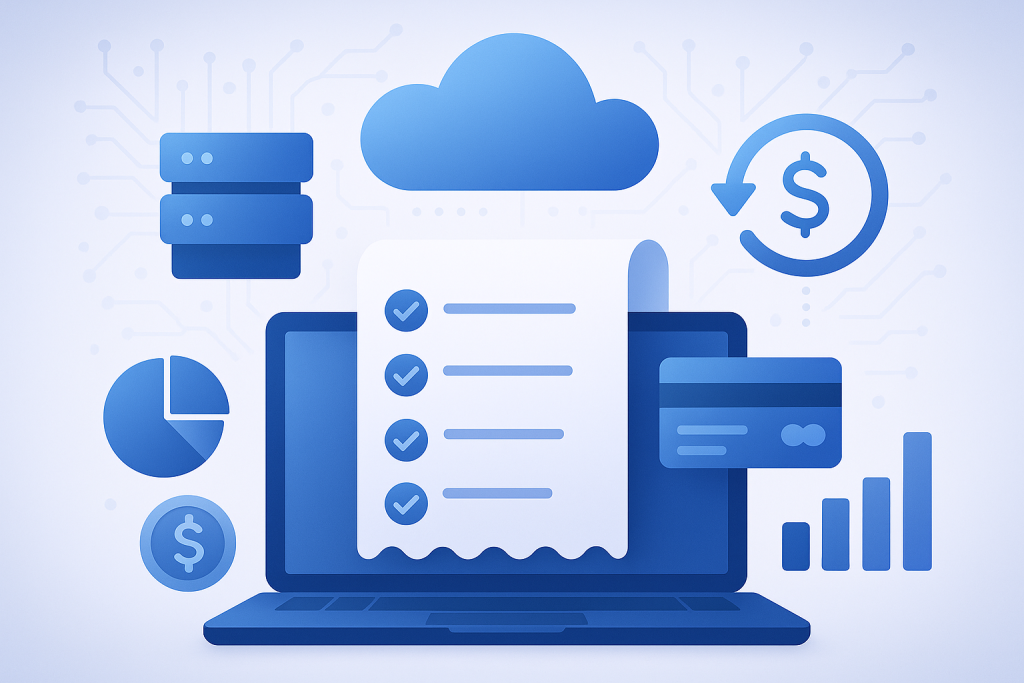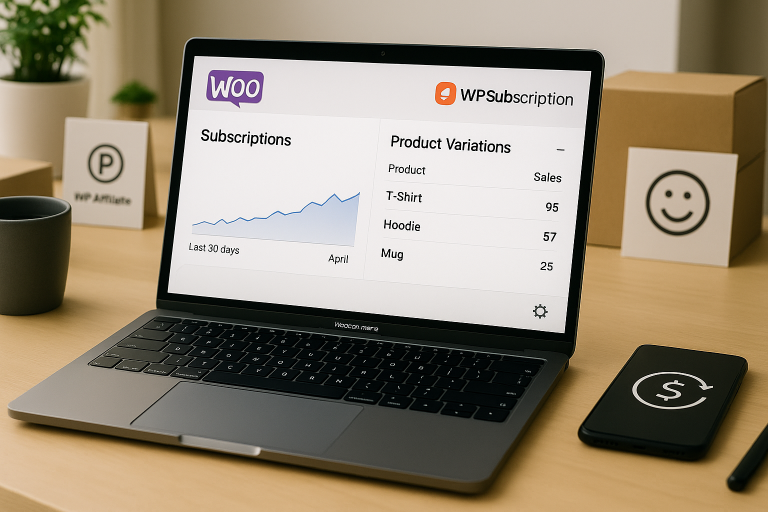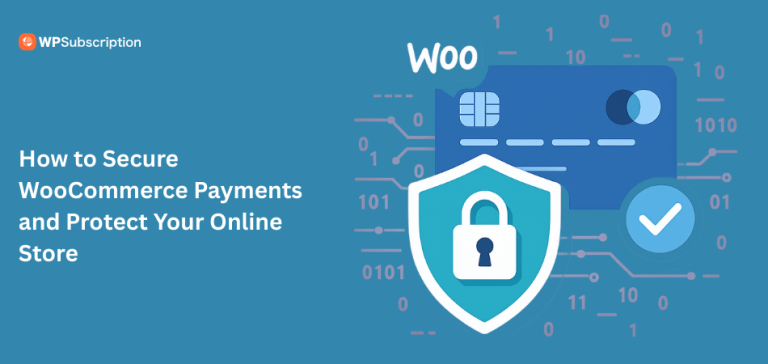Subscription billing is more than just a payment tool. It is a business method that helps you build strong, long-term customer relationships.
Instead of selling once and hoping customers come back, you give ongoing value and get paid regularly. This approach makes your business more stable and helps you grow without constantly finding new customers.
It works especially well for digital products and services because people can keep using them without delays or interruptions.
Table of Contents
What is Subscription Billing?
Subscription billing means charging your customers automatically on a regular schedule. This can be every month, three months, or once a year.

The customer signs up once and then keeps getting charged as long as they stay subscribed. This system removes the need for repeated manual payments, making it easier for both the business and the customer.
It works for many types of digital businesses like video streaming, cloud software, online tools, digital magazines, learning platforms, and more.
It ensures uninterrupted service for users and consistent income for businesses.
Why Subscription Billing Matters for Digital Businesses
Digital businesses grow by keeping customers, growing revenue, and running smoothly. Subscription billing helps with all of these things.
Since everything in a digital business is online and can be automated, subscription billing fits perfectly. It lets you save time on billing, reduces errors, and builds trust with customers.
When people know they’ll be billed fairly and on time, they stay longer. You can also plan your future better when you know how much money will come in every month.
Quick Summary Table of Subscription Billing Benefits
| Benefit | Detailed Description |
|---|---|
| Predictable Revenue | Subscription billing provides a steady, recurring income stream. You can forecast future revenue more accurately, plan budgets better, and reduce financial uncertainty. |
| Operational Efficiency | Automating the billing process means less manual work for your team. It reduces human errors, eliminates the need to chase payments, and frees up time for higher-value tasks. |
| Customer Convenience | Customers only enter their payment info once. With auto-payments, they don’t have to remember due dates, and flexible billing options make it easier to stay subscribed. |
| Increased Retention | The easier the experience, the more likely customers are to stay. Subscription models naturally lead to longer customer relationships and increase customer lifetime value. |
| Fewer Late Payments | Automated billing ensures payments are collected on time. It reduces the number of missed or late payments, helping cash flow and minimizing the need for reminders or follow-ups. |
| Revenue Expansion | With recurring billing, it’s easier to offer add-ons, upgrades, and new features. You can upsell and cross-sell with less resistance, growing your average revenue per customer. |
| Lower Acquisition Costs | Once a customer subscribes, you don’t need to spend money convincing them to buy again. This reduces marketing and sales expenses over time and improves ROI. |
Key Benefits of Subscription Billing
1. Predictable and Stable Revenue
Consistent Cash Flow: With subscription billing, you know how much money you’ll earn each month because customers pay at the same time every cycle.
This makes your income reliable, which is very helpful for planning. You can pay employees, invest in marketing, or build new features without guessing how much money will be available.
Stable cash flow also makes your business more attractive to investors and partners.
Better Planning: When your income is predictable, you can make better decisions for your business. You’ll feel more confident in hiring new team members or launching marketing campaigns.
You can also test new ideas with less risk, knowing you’ll still have money coming in from subscriptions. This helps your business grow in a more organized way.
2. Better Work Efficiency
Less Manual Work: Subscription billing systems automate the entire billing process. You don’t have to send invoices every month or remind customers to pay.
Everything happens in the background. This saves time for your team, so they can focus on more important work like improving your product or helping customers.
Fewer Mistakes: When billing is done manually, mistakes can happen. You might charge the wrong amount, miss a customer, or bill someone twice.
With an automated system, these errors are rare. Your customers will trust you more because they know the billing is accurate. It also means fewer complaints and less time fixing billing issues.
3. Happy and Loyal Customers
Easy and Convenient: Customers like subscription billing because it’s simple. They only need to enter their payment details once. After that, everything happens automatically.
They don’t have to remember to pay each month or worry about service interruptions. This easy process improves their overall experience and makes them want to stay longer.
No Service Breaks: Since payments are automatic, customers don’t face delays or service blocks. They can continue using your product or service without any break.
This is especially important for tools or services they depend on daily. When customers know they can rely on your service, they are more likely to keep using it.
Flexible Options: Subscription billing allows you to offer different plans to meet different needs. Some customers might prefer to pay monthly, while others want to save money with a yearly plan.
You can also offer discounts, trial periods, or tiered pricing. These flexible options make your service more attractive to a wider range of people.
4. Fewer Late or Missed Payments
On-Time Payments: Automated billing means the system charges the customer at the right time, every time. This reduces late payments and helps you get paid on time.
You don’t have to follow up with emails or worry about when the next payment will come in. Everything is taken care of by the billing software.
Friendly Reminders: Many subscription billing tools send automatic reminders when a card is about to expire or when a payment fails.
This gives the customer time to fix the problem, so you don’t lose revenue. These small reminders can make a big difference in keeping your cash flow steady.
5. More Ways to Grow Revenue
Add-On Sales: Once a customer is already paying for your service, it’s easier to offer them more features or upgrades.
You can promote add-ons like extra storage, advanced tools, or premium support. Since customers trust your service, they are more open to spending a little more.
Easy Upgrades: Customers can move to higher plans with just a few clicks. With subscription billing, you don’t need to process these upgrades manually.
This smooth experience makes it more likely that customers will choose better plans as their needs grow. It also increases your average revenue per customer.
6. Lower Costs to Get New Customers
Save on Marketing: Getting a new customer can be expensive. You need ads, email campaigns, and sales calls.
But with subscription billing, once a customer signs up, they keep paying without extra effort from you. This means you spend less money and time convincing them to buy again.
Focus on Retention: Instead of always chasing new customers, you can focus on keeping your current ones happy. This is often cheaper and more effective.
Happy subscribers may even recommend your service to others, giving you free marketing through word of mouth.
How to Set Up Subscription Billing
1. Pick the Right Billing Tool
Choosing the right subscription billing payments tool is one of the most important steps in setting up your recurring payments system.
The platform should support your pricing models, payment preferences, and business goals while being easy to use and scale.
A reliable billing tool also reduces manual work and helps prevent common issues like failed payments.
What to look for:
- Popular, trusted platforms: Stripe, Chargebee, Recurly, Paddle
- Support for different billing cycles (monthly, quarterly, yearly)
- Multiple payment methods (credit/debit cards, PayPal, bank transfers, digital wallets)
- Easy integration with your website, app, or CRM
- Built-in tools for analytics, reporting, email reminders, and dunning (retrying failed payments)
2. Set Clear Pricing Plans
A clear and simple pricing structure helps potential customers make quick decisions. Confusing or overly complex plans can push people away. Be transparent, consistent, and value-driven when you present your offerings.
Tips for effective pricing plans:
- Use simple, descriptive names (e.g., Basic, Pro, Premium)
- Clearly list features and benefits included in each plan
- Avoid hidden charges or unclear terms
- Show a side-by-side comparison if you offer multiple plans
- Start with 2 to 3 plans to avoid overwhelming users
3. Make Sign-Up Easy
Your subscription billing system should make it easy for users to sign up. A long or complicated process can cause people to give up before completing the checkout.
Smooth and secure onboarding boosts conversions and builds trust.
How to simplify sign-up:
- Ask for only essential information (name, email, password, payment info)
- Use a clean, user-friendly form with clear instructions
- Allow sign-up via social logins (optional, for ease)
- Ensure mobile responsiveness and fast loading speeds
- Highlight trust signals like secure payment badges and privacy policies
4. Automate Payment Updates
Cards expire, get lost, or change. When this happens, payments can fail and cause service interruptions. Automating payment updates keeps your revenue flowing and your customers happy without extra effort on their part.
What automation helps with:
- Use a billing system that includes account updater services
- Automatically retry failed payments multiple times over several days
- Send email or SMS alerts before a card expires
- Let users easily update payment details from their dashboard
- Avoid losing customers due to simple billing errors
5. Test Before You Launch
Testing is essential to make sure everything works the way it should. Before making your billing system live, simulate real user actions. This helps you catch bugs, improve the experience, and avoid costly mistakes.
What to test:
- Try different payment methods (Visa, Mastercard, PayPal, etc.)
- Subscribe, upgrade, downgrade, and cancel a plan
- Make sure billing happens on the correct dates
- Confirm that receipts and email notifications are sent as expected
- Test different user journeys on mobile and desktop
Best Practices to Use Subscription Billing Well
Be Honest and Clear
Always be upfront with your customers. Tell them exactly how much they’ll pay, when payments will be made, and how they can cancel if needed.
Put this information on your pricing page and in confirmation emails. Honest communication builds trust and reduces confusion.
Let Users Cancel Easily
Don’t make it hard for customers to cancel. If canceling is simple, customers will respect your business more and may come back later. Complicated cancellation processes lead to frustration and bad reviews.
Watch Churn Rates
Churn rate is the number of people who stop their subscriptions. Keep an eye on this number. If it’s high, ask why. Maybe the pricing is too high, or the value isn’t clear.
Use surveys or feedback tools to learn what can be improved.
Send Payment Reminders
Let customers know when their card is about to expire or when a charge is coming up. This avoids failed payments and gives them time to fix issues.
Most billing tools can send these reminders automatically.
Keep Payment Info Updated
Encourage your customers to check and update their payment info regularly. You can do this through monthly emails or simple dashboard messages.
This prevents service disruptions and keeps your billing smooth.
Common Problems and How to Fix Them
| Problem | Solution |
|---|---|
| Payment Failures | Use auto retries and update payment info tools |
| Customer Churn | Offer good support and flexible plans |
| Security and Compliance | Use PCI-compliant, secure billing tools |
| Managing Plan Changes | Allow easy upgrades/downgrades in the platform |
Conclusion & Next Steps
Subscription billing helps digital businesses earn steady money, reduce work, and make customers happy. It’s a smart and simple way to grow your business over time.
You get more predictable income, customers stay longer, and your team spends less time handling payments.
Next Steps:
- Choose a good billing system
- Create clear pricing plans
- Make sign-up easy for customers
- Follow best practices for smooth billing
- Keep improving based on customer feedback
With the right tools and plan, subscription billing can power your business for years to come.
Frequently Asked Questions
Q: What types of businesses use subscription billing?
A: Many types of digital businesses benefit from subscription billing. These include SaaS companies, video and music streaming services, online education platforms, digital newspapers and magazines, fitness apps, and community or membership sites. Any business that delivers continuous value can benefit from recurring payments.
Q: How does subscription billing help keep customers?
A: Subscription billing creates a smooth and easy experience for customers. Once they sign up, they don’t have to worry about payments or renewals. They get continuous access to your service without interruption. This ease of use makes them more likely to stay subscribed for a long time.
Q: What should I look for in a subscription billing system?
A: Choose a billing system that is easy to use, flexible, and secure. Look for features like plan management, automatic reminders, multiple payment options, and good customer support. Make sure the system keeps customer data safe and is PCI-compliant.
Ready to get started with subscription billing? Review your billing needs and check out top platforms today!




